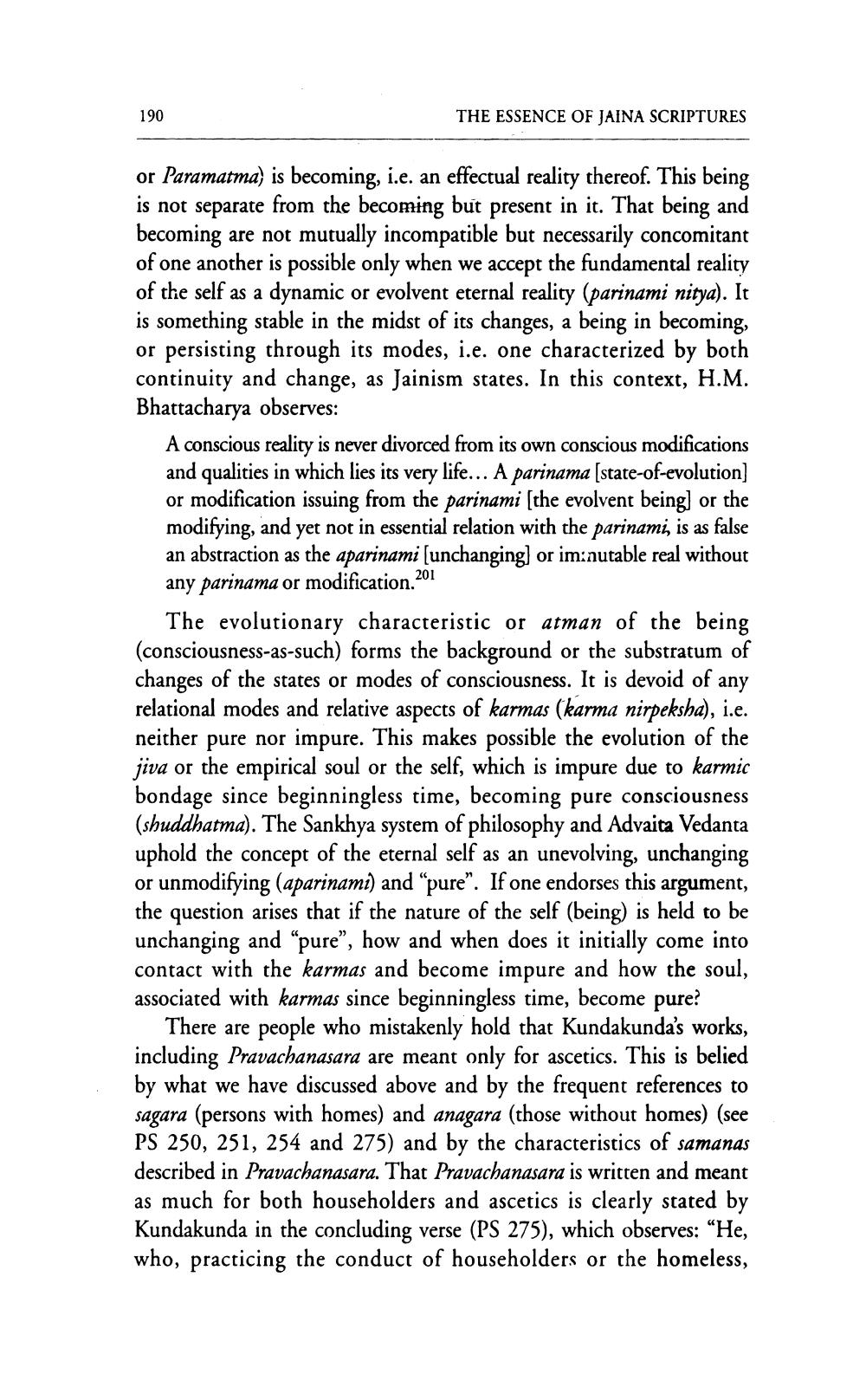________________
190
THE ESSENCE OF JAINA SCRIPTURES
or Paramatma) is becoming, i.e. an effectual reality thereof. This being is not separate from the becoming but present in it. That being and becoming are not mutually incompatible but necessarily concomitant of one another is possible only when we accept the fundamental reality of the self as a dynamic or evolvent eternal reality (parinami nitya). It is something stable in the midst of its changes, a being in becoming, or persisting through its modes, i.e. one characterized by both continuity and change, as Jainism states. In this context, H.M. Bhattacharya observes:
A conscious reality is never divorced from its own conscious modifications and qualities in which lies its very life... A parinama (state-of-evolution] or modification issuing from the parinami (the evolvent being) or the modifying, and yet not in essential relation with the parinami, is as false an abstraction as the aparinami (unchanging) or im:nutable real without any parinama or modification.201
The evolutionary characteristic or atman of the being (consciousness-as-such) forms the background or the substratum of changes of the states or modes of consciousness. It is devoid of any relational modes and relative aspects of karmas (karma nirpeksha), i.e. neither pure nor impure. This makes possible the evolution of the jiva or the empirical soul or the self, which is impure due to karmic bondage since beginningless time, becoming pure consciousness (shuddhatma). The Sankhya system of philosophy and Advaita Vedanta uphold the concept of the eternal self as an unevolving, unchanging or unmodifying (aparinami) and “pure". If one endorses this argument, the question arises that if the nature of the self (being) is held to be unchanging and “pure”, how and when does it initially come into contact with the karmas and become impure and how the soul, associated with karmas since beginningless time, become pure?
There are people who mistakenly hold that Kundakunda's works, including Pravachanasara are meant only for ascetics. This is belied by what we have discussed above and by the frequent references to sagara (persons with homes) and anagara (those without homes) (see PS 250, 251, 254 and 275) and by the characteristics of samanas described in Pravachanasara. That Pravachanasara is written and meant as much for both householders and ascetics is clearly stated by Kundakunda in the concluding verse (PS 275), which observes: “He, who, practicing the conduct of householders or the homeless,




